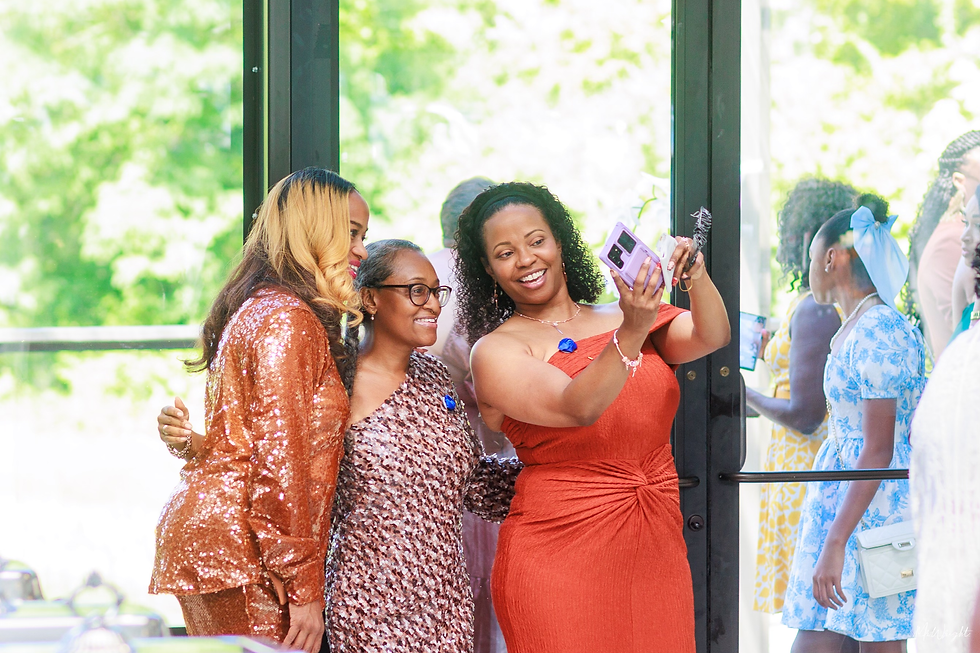Professionally Feminine
- Hannah Jordan

- Oct 9, 2020
- 5 min read
Updated: May 22, 2023

How a woman dresses is a never-ending dialogue. It does not matter what she is doing, her clothing choices somehow make it into the conversation. Whether she is a movie star or politician, her clothing choices supersede her actions. While we see more high-profile women criticized or praised for their appearance, every woman has been under the microscope. Are you dressing appropriately? Who has decided what is appropriate? How do we know if the way we dress is because we were socialized under a patriarchal society or it is because we enjoy what we have chosen?
It is hard to tell where the “if you are dressing feminine or girly you are not a feminist” state of mind started. Some people believe dressing “girly” is a direct result of growing up under the influence of the ideal woman in a patriarchal society (the “ideal” woman is a whole different conversation, and I will not be delving into that here). A woman could not possibly be fond of wearing pink dresses, they must have been trained to think that way. The realization that some women genuinely appreciate what is deemed inherently feminine is now more widely accepted in feminist circles. The rallying cry of shedding all that is or was feminine, however, is not completely behind us. You are not alone if you have ever been criticized for dressing “too girly”. These ideals have followed us into all aspects of our lives.
While the conversation on how women dress in all areas of life and how they are perceived because of it is important, I am here to focus on work wear, specifically in the business casual setting (dress codes and how they are inherently misogynistic is also another conversation to be had). Business and fashion have always clashed, especially for women. If you dress more feminine this clash becomes even greater. The men and women (hello, internalized misogyny) in an office setting perceive a woman dressed more femininely as someone who may not bring much to the table. It can be assumed that the fluffy dress you’re wearing matches the fluff in your head. This can lead to less respect in similar roles, especially in executive positions. While it has not specifically ever been stated to me in so many words, I have felt the pressure to dress less feminine in the workplace because people may not take me as seriously in my brightly colored, patterned, and textured pieces.
Fashion and personal style were not something I always had top of mind in the sense of curating my wardrobe. What was always top of mind (I just did not notice at the time) was how I was perceived when wearing certain items. When I was younger (not quite school-aged), I loved dressing up and picking out my outfits. I refused to wear pants and found comfort in dresses and matching sets (much like I do today). When I entered school, I flipped between the “tom-boy” and “girly-girl” aesthetic because I could never quite figure out where I fit. I was teased on both ends. As it typically does, age brings wisdom and a don’t-really-care attitude. My style and taste were not defined by men who prefer short skirts or by those who liked to comment, “you are overdressed”. It was defined by me, what I found comfortable, and
profoundly, well, me. That person, this woman, is someone who likes to wear pink and twirl worthy skirts, especially around the office.
My professional life has been plagued by dichotomies and double standards.
Men may feel some pressure, but women have always tried to straddle the line of “just right”. Comments such as “wear makeup, but not too much”, “look feminine, but not sexy”, “wear heels, but nothing too high”, and “dress like a lady, but not a prude” have made their way in to conversations regarding what is appropriate for female employees in places I have worked. I have spent around ten years figuring out what “they” are talking about and what that means for me. When it comes to dress codes, I have always been on the side of “loose interpretation.” Not all positions allow for your personal style to shine through (uniforms are important in certain workplaces). I have purposely chosen to work for companies with a structure for attire, but do not (necessarily) dampen personal flair. It is easy for a man to say, “Just let your work do the talking, it does not matter what you are wearing” because for him, it does not matter (unless he is giving a presentation to a CEO in a suit and he is dressed in a trash bag). The color of his tie is not going to distract from his work, however, my green and white polka dot skirt could.
One of my favorite pieces about women and fashion in their professional lives is the Elle piece by Chimamanda Ngozi Adichie “Why Can’t a Smart Woman Love Fashion?” (2014). Adichie wrote about how she watched her mother’s professional career grow while also paying attention to fashion and style and how her career path as a writer affected her views on not only how she dressed, but how other women dressed. Adichie wrote, “Women who wanted to be taken seriously were supposed to substantiate their seriousness with a studied indifference to appearance.” What she is saying and what I have found to be true is that women can either be perceived as smart or into girly things, but they certainly cannot be both. So, what is a girl to do? Do you run the risk of your work being overlooked by your looks?

What I had always thought, but Jessica Day (New Girl, Season 1 Episode 11) said it perfectly, “I brake for birds. I rock a lot of polka dots. I have touched glitter in the past 24 hours. I spend my entire day talking to children. And I find it fundamentally strange that you’re not a dessert person. That’s just weird, and it freaks me out. And I’m sorry I don’t talk like Murphy Brown. And I hate your pantsuit. I wish it had ribbons on it or something to make it just slightly cuter. And that doesn’t mean I’m not smart and tough and strong.” The two characters have vastly different jobs. A schoolteacher has a wider range of options for her wardrobe, while her lawyer counterpart could potentially find her work wardrobe stifling. Both jobs are incredibly important, so why should only one of these women be taken more seriously? Is it because one is in a pantsuit?
Both the gauzy dress and the suit get the same compliments of how pretty I appear, but by wearing the suit, I have grabbed their attention to my work. In keeping with my identity, any pantsuit I wear is still fundamentally “girly” but is deemed more acceptable. I have stood in front of my closet for longer than necessary while staring at each piece determining how “professional” it is. Why can I not be ambitious, professional, and adorably dressed? I have never understood why I could not be the person at the head of the table even if I were wearing a pink dress with a big bow at the neck. Whether or not I choose to dress more inherently feminine should not determine my level of authority. How I dress, how others choose to dress, does not take away the ability to lead a room, a team, to success. The system just wants you to believe you can’t, so you won’t. Besides, those stiletto Louboutins and Manolos are perfect for smashing glass ceilings.
Pink dress | Gal Meets Glam;
Headband: Amazon; Shoes: J. Crew factory
Blazer + Skirt Outfit | Tulle skirt: Amazon; Blouse: Modcloth;
Blazer: Zara; Headband: Amazon; Shoes: Aldo
Suit | Lookalike from Asos; Blouse: Modcloth
Written by Hannah Mills



















شيخ روحاني
رقم شيخ روحاني
شيخ روحاني لجلب الحبيب
الشيخ الروحاني
الشيخ الروحاني
شيخ روحاني سعودي
رقم شيخ روحاني
شيخ روحاني مضمون
Berlinintim
Berlin Intim
جلب الحبيب
سكس العرب
https://www.eljnoub.com/
https://hurenberlin.com/
جلب الحبيب بالشمعة
Upgrade your footwear collection with converse slippers men's, converse baseball shoes, and mens converse gym shoes for casual and athletic wear. Stay stylish with a mens converse t shirt while pairing it with mens converse tennis shoes, mens converse low tops, or mens converse all stars. Elevate your look with converse platforms men, converse platform sneakers, converse low top platform, and high platform converse shoes. Kids can enjoy trendy platform kids converse, while fashion-forward individuals can rock converse platform trainers. Whether for sports or streetwear, Converse has the perfect style for you! mens converse all stars
Want to make a statement? A red leather biker jacket womens is the perfect way to add boldness to your outfit. Stylish and premium quality—check them out at Biker Jacket!
Stay warm and stylish with a collection of John Dutton Jackets, inspired by his signature looks on Yellowstone. Find them all in one place at Western Apparel.
It’s amazing to see how embracing fashion and personal style can transform how you feel about yourself. Curating a wardrobe that reflects your personality can truly make a difference! If you're looking to complement your updated look, consider freshening up your hair as well. A visit for female haircuts in McLean can give you a stylish new cut that enhances your overall vibe, or even treat yourself to hair coloring for women to add a pop of color that matches your refreshed style!